Abstract
Jarolmen, Howard (Hahnemann Medical College, Philadelphia, Pa.), Amedeo Bondi, and Richard L. Crowell. Transduction of Staphylococcus aureus to tetracycline resistance in vivo. J. Bacteriol. 89:1286–1290. 1965.—Staphylophage 80, propagated on a hospital strain of Staphylococcus aureus 80/81, has been shown to transduce antibiotic resistance markers to a variety of staphylococcal recipient strains in vitro. In an attempt to demonstrate transduction of penicillin and tetracycline resistance in mice, experiments were performed in which mice were injected intravenously with a pathogenic recipient strain, S. aureus N135, and subsequently with transducing phage by the same route. Periodic assays of organs from infected mice revealed that maximal bacterial concentrations were attained in kidneys 6 days after infection, at which time the transducing lysate, containing approximately 5 × 1010 plaque-forming particles, was introduced. Isolation of tetracycline-resistant transductants from the kidneys of infected animals was facilitated by the therapeutic administration of tetracycline. In contrast, penicillin-resistant transductants, which produced penicillinase, were not found even when penicillin therapy was administered. Results showed that tetracycline-resistant transductants were recovered from as many as 40% of test animals in repeated experiments. Furthermore, in some of these mice the entire staphylococcal population of the kidneys was found to be tetracycline-resistant. Control infected animals which did not receive phage were uniformly negative for tetracycline-resistant staphylococci. The finding that phage levels were low or undetectable at a time when tetracycline-resistant organisms were recovered from test animals provided evidence that transduction had occurred in vivo.
Full text
PDF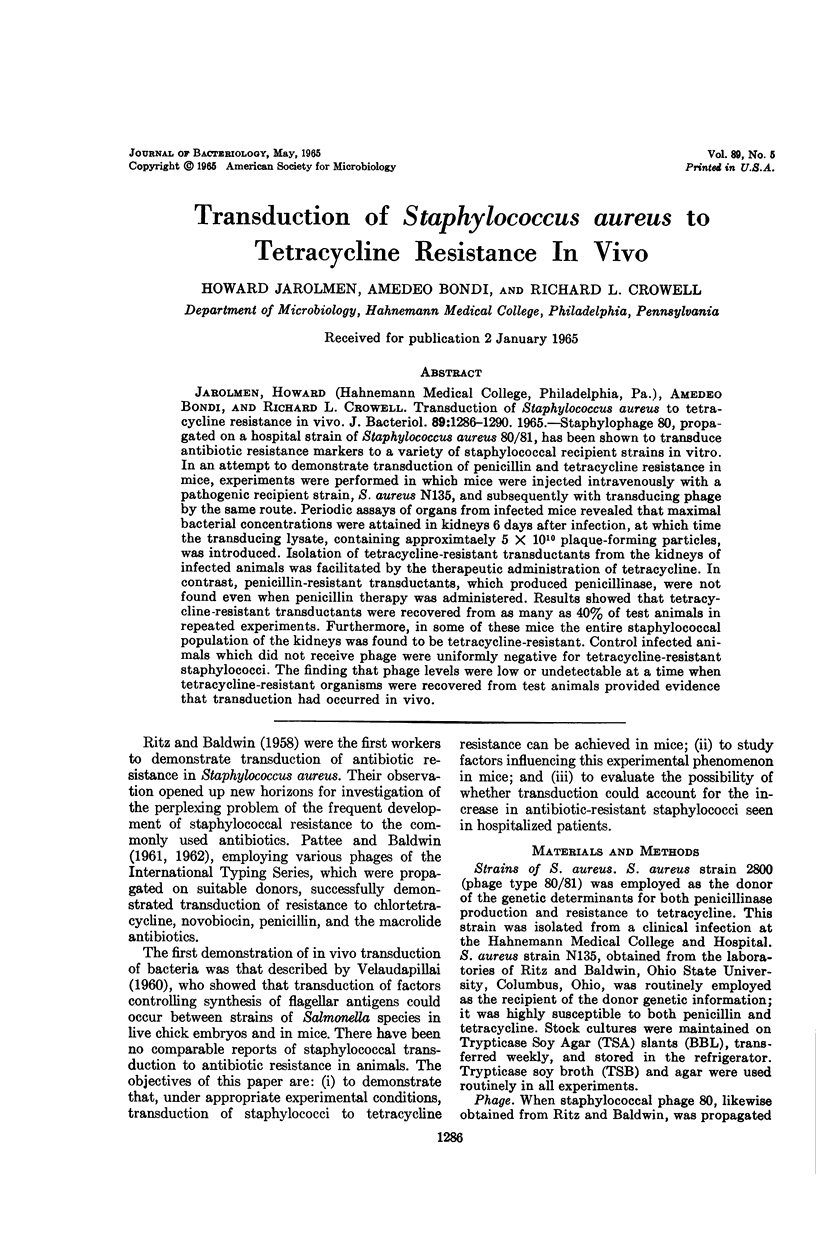
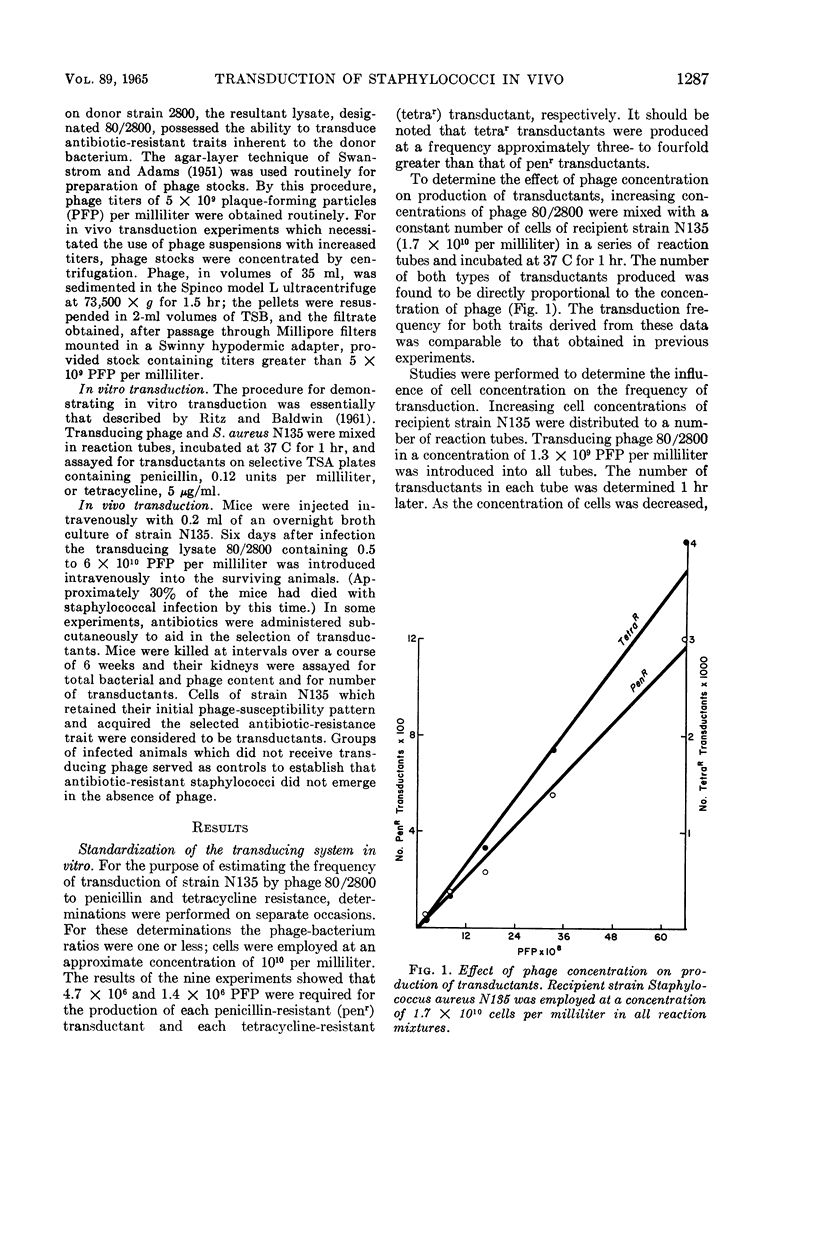
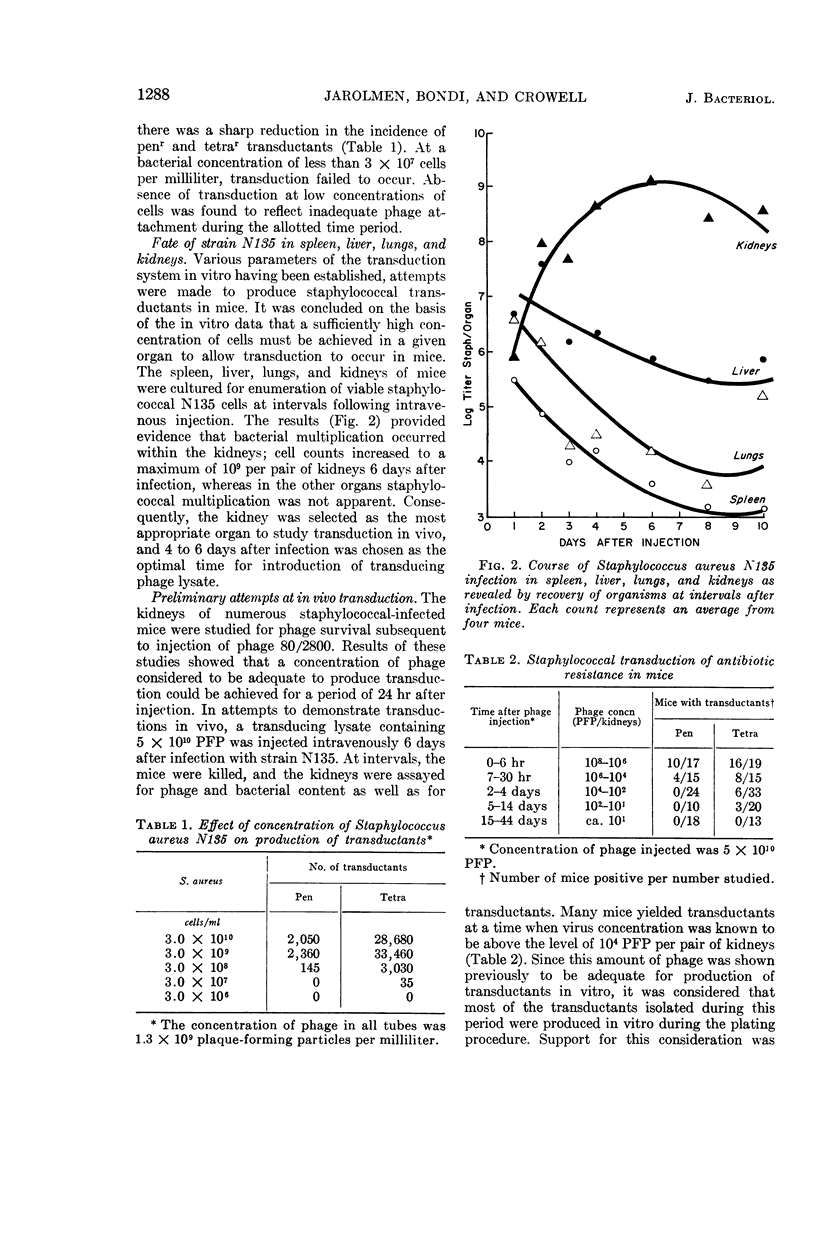
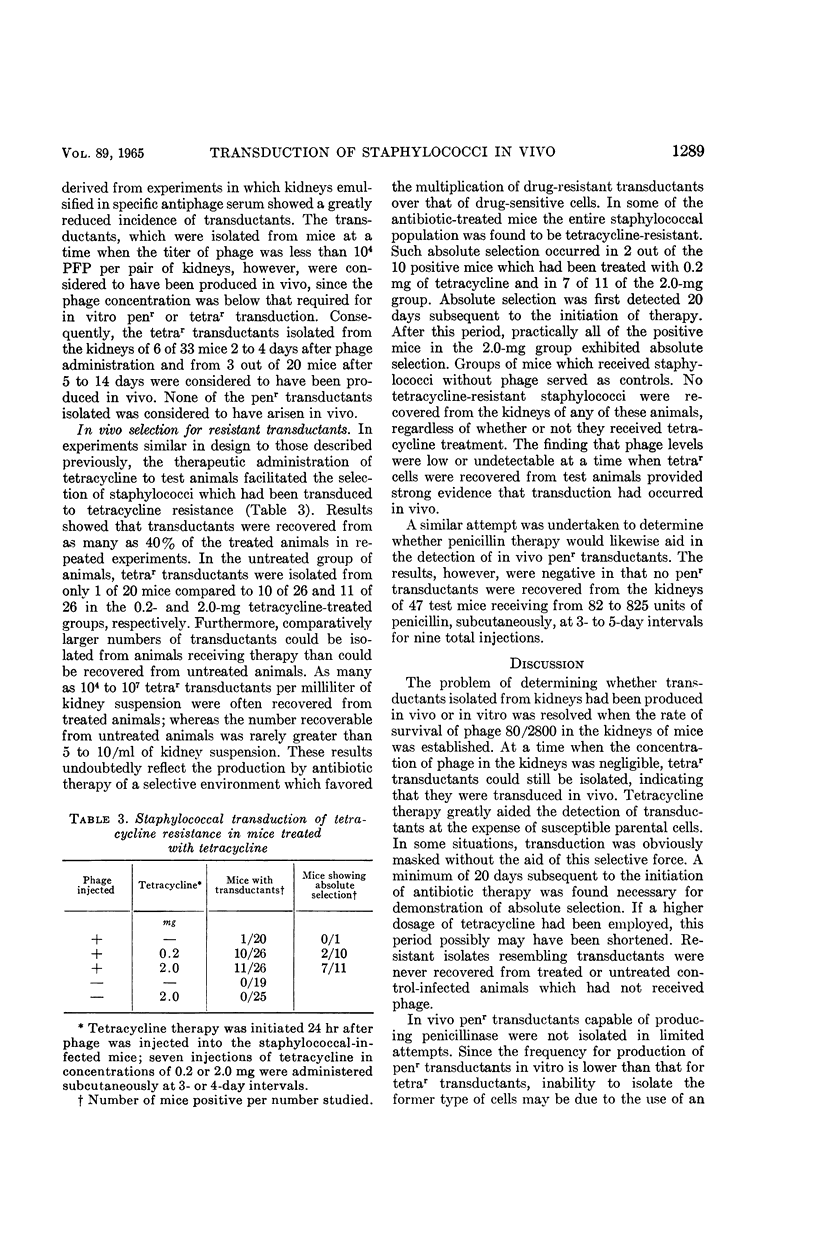
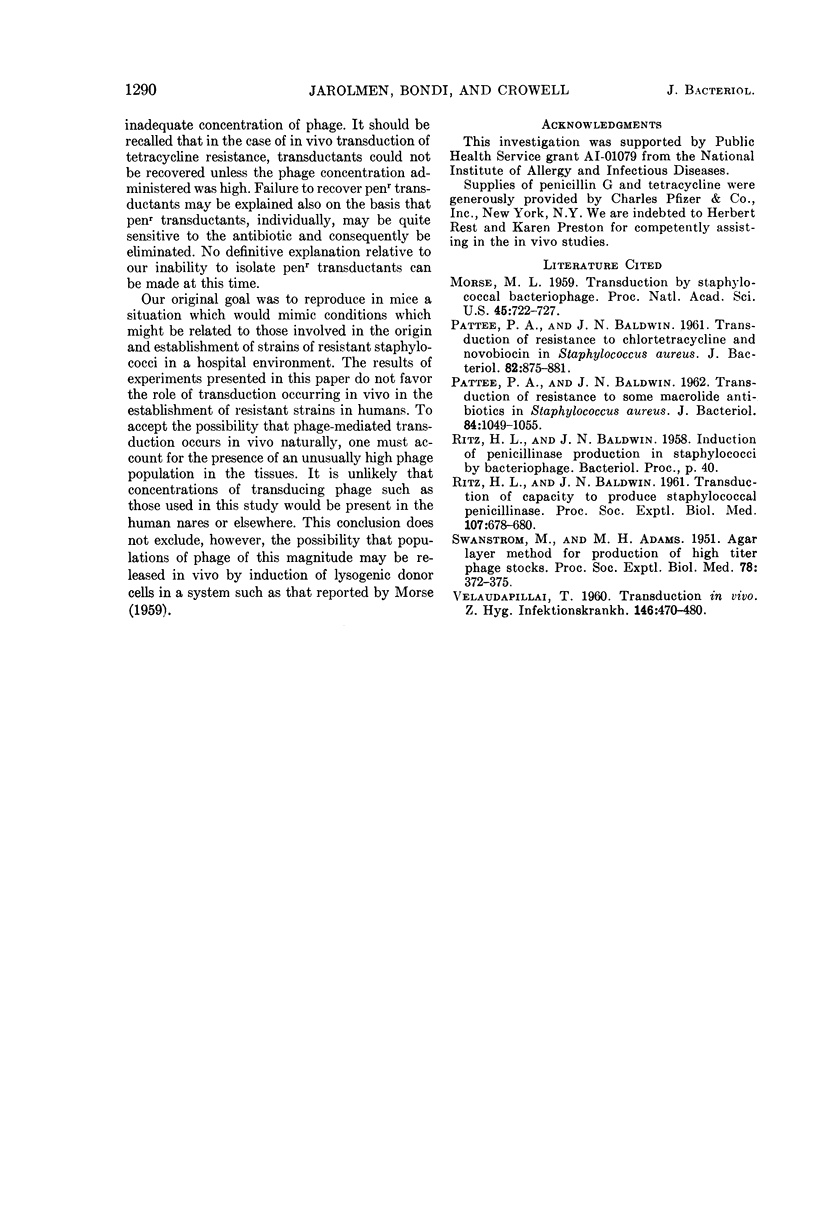
Selected References
These references are in PubMed. This may not be the complete list of references from this article.
- Morse M. L. TRANSDUCTION BY STAPHYLOCOCCAL BACTERIOPHAGE. Proc Natl Acad Sci U S A. 1959 May;45(5):722–727. doi: 10.1073/pnas.45.5.722. [DOI] [PMC free article] [PubMed] [Google Scholar]
- PATTEE P. A., BALDWIN J. N. Transduction of resistance to chlortetracycline and novobiocin in Staphylococcus aureus. J Bacteriol. 1961 Dec;82:875–881. doi: 10.1128/jb.82.6.875-881.1961. [DOI] [PMC free article] [PubMed] [Google Scholar]
- PATTEE P. A., BALDWIN J. N. Transduction of resistance to some macrolide antibiotics in Staphylococcus aureus. J Bacteriol. 1962 Nov;84:1049–1055. doi: 10.1128/jb.84.5.1049-1055.1962. [DOI] [PMC free article] [PubMed] [Google Scholar]
- RITZ H. L., BALDWIN J. N. Transduction of capacity to produce staphylococcal penicillinase. Proc Soc Exp Biol Med. 1961 Jul;107:678–680. doi: 10.3181/00379727-107-26726. [DOI] [PubMed] [Google Scholar]
- SWANSTROM M., ADAMS M. H. Agar layer method for production of high titer phage stocks. Proc Soc Exp Biol Med. 1951 Nov;78(2):372–375. doi: 10.3181/00379727-78-19076. [DOI] [PubMed] [Google Scholar]


